► Toyota’s purpose-built EV crossover tested
► It’s been tweaked for 2024, range of up to 318 miles
► Quicker to charge and features new heating tech
This is the Toyota bXz4 4XBz bZ4X and, if you ignore the California-only RAV4 EV, it’s Toyota’s first real venture into a battery-electric vehicle.
Playing the long game means that the Toyota bZ4X is an impressively considered approach to an electric SUV, with a new ownership approach named ‘Kanzen’ intended to make running one as painless as possible. And it’s hardly as if Toyotas are known for being temperamental in the first place.
Toyota has given the bZ4X the teeniest of updates for 2024 and beyond, so we’ve had another drive.
At a glance
Pros: Quiet and smooth, great driving position, sweet steering
Cons: Range and boot space still only average, interior may put off some
What’s new?
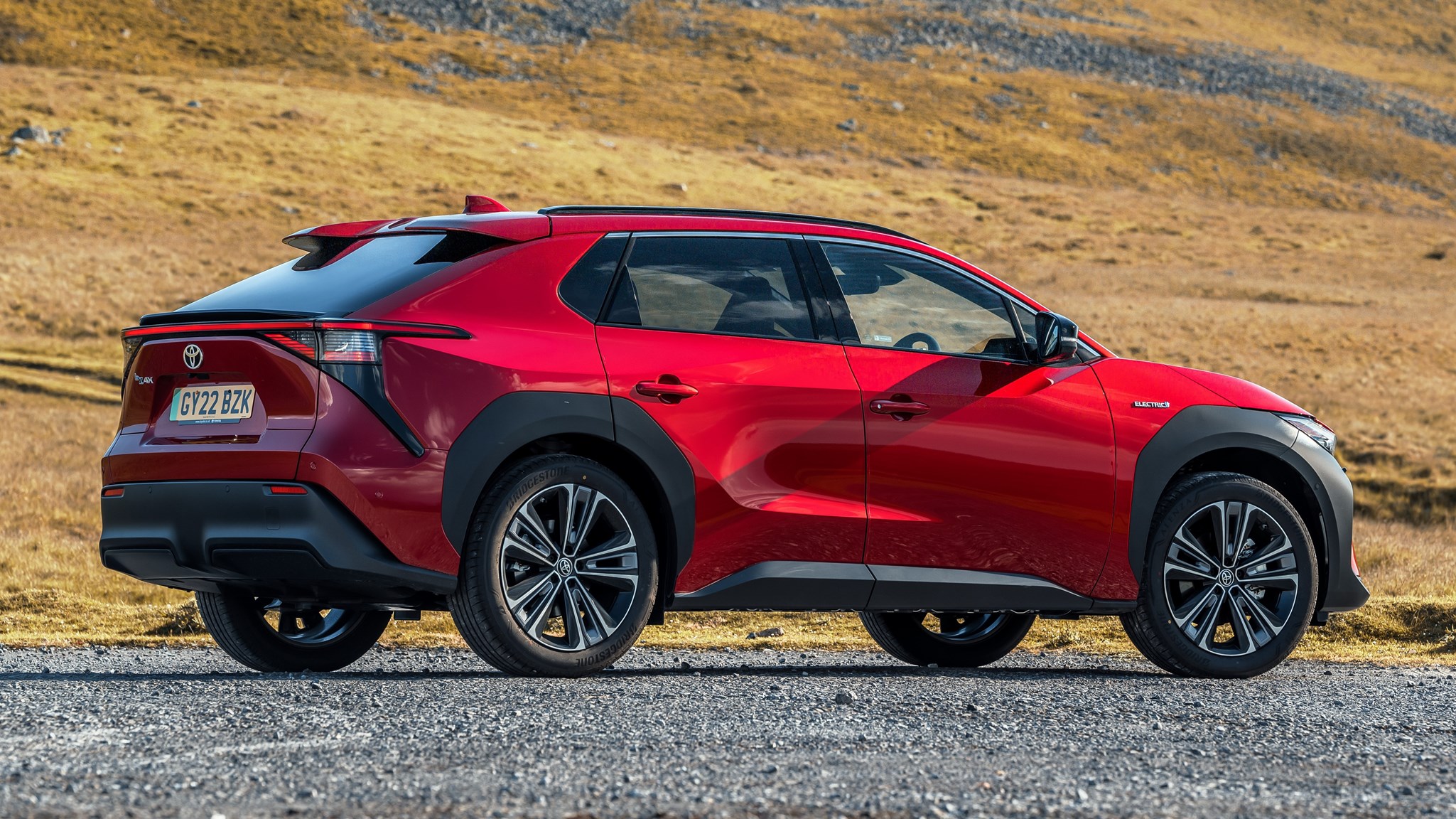
Toyota’s first mainstream electric car was met with a decidedly lukewarm reception when it first launched only a couple of years ago. It had a weird name (bZ stands for ‘beyond Zero,’ ‘4’ implies the size of the car and ‘X’ means it’s an SUV – as a reminder) and it wasn’t helped by it looking weird inside and out, too. When we came to drive it, we noticed it had an average range (with a pessimistic range prediction that dropped significantly if you so much as used the air-con), nor did it have didn’t have a particularly competitive charging offering. Ho-hum was putting it mildly.
So, Toyota decided it would see if it could try and fix a couple of bits of feedback for a model-year update. The main update is the bZ4X is its charging performance, with a new heat exchanger that is designed to improve charging times at mainly lower temperatures. To address the fact the range predictor drops when the air-con is switched on, Toyota has applied a clever radiant heating system (first seen on the Lexus RZ, the bZ4x’s Lexus twin) to make heating the interior much more efficient than blasting hot air directly at your face.
But that’s sort of it.
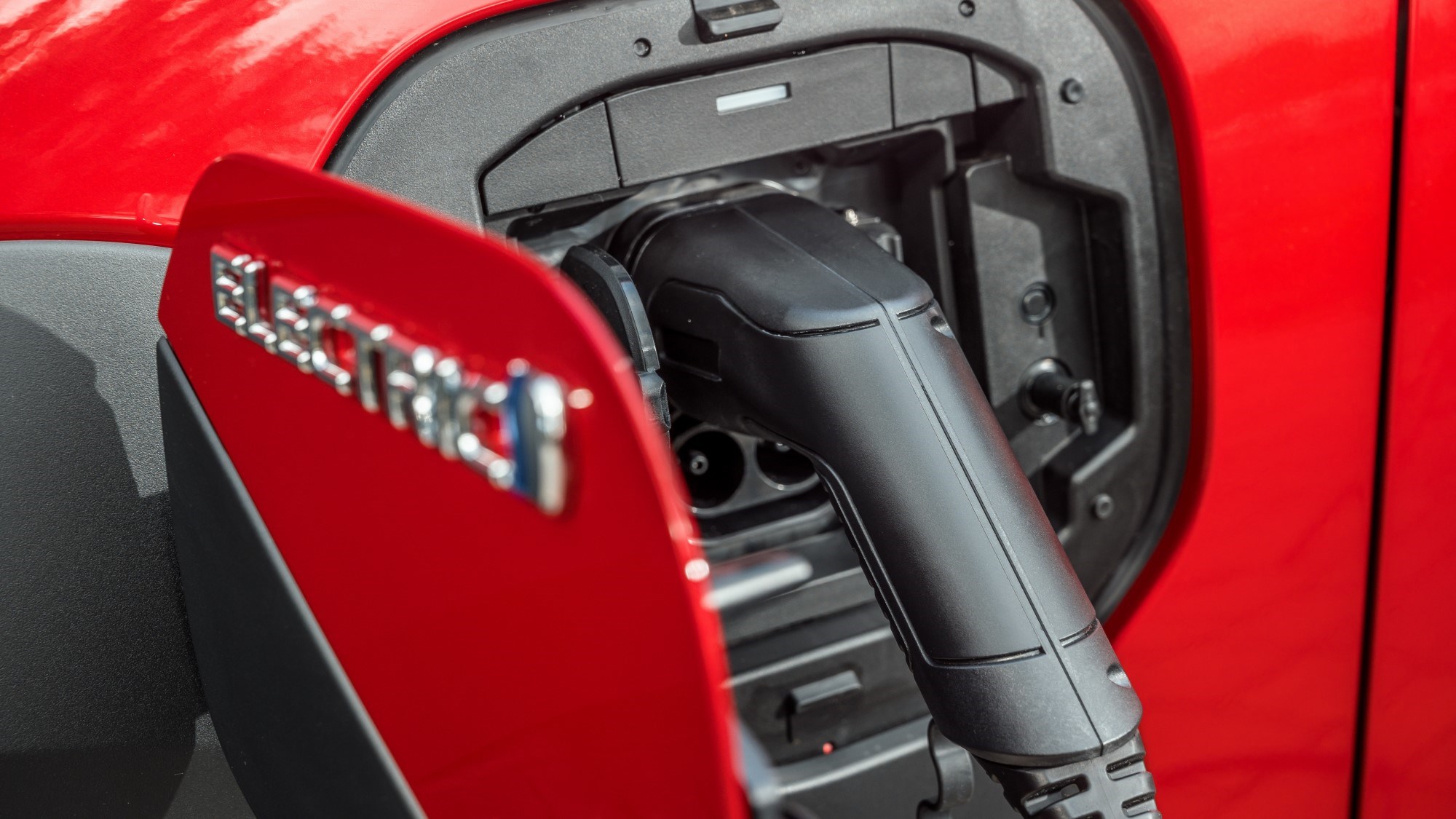
What are the specs?
The platform the Toyota bZ4X sits on is called eTNGA, and unsurprisingly it’s the brand’s bespoke electric car platform heavily related to the standard TNGA underpinnings of cars like the RAV4. It’s fairly standard stuff with a ‘skateboard’ style 71.4kWh battery pack and axle-mounted electric motors. The battery in this case is structural, aiding rigidity, and suspension is via MacPherson struts at the front and trailing arms at the rear.
The resulting car is around 9cm longer than a RAV4 but a little lower, with a heavily sloping rear window giving it the ‘coupe-like’ roofline that’s so fashionable – complete with missing rear wiper. It pairs that with several Land Rovers’ worth of black plastic cladding around the wheelarches. It’s not heinously ugly, though you’d struggle to be kinder than calling its drawn-up face and anonymous rear anything more than distinctive.
The motor situation is a little more interesting. Currently there are two options powering the Toyota bZ4X. A front-wheel drive model uses a single 150kW (201bhp) electric motor on the front axle, giving a 0-62mph sprint of 7.5 seconds.
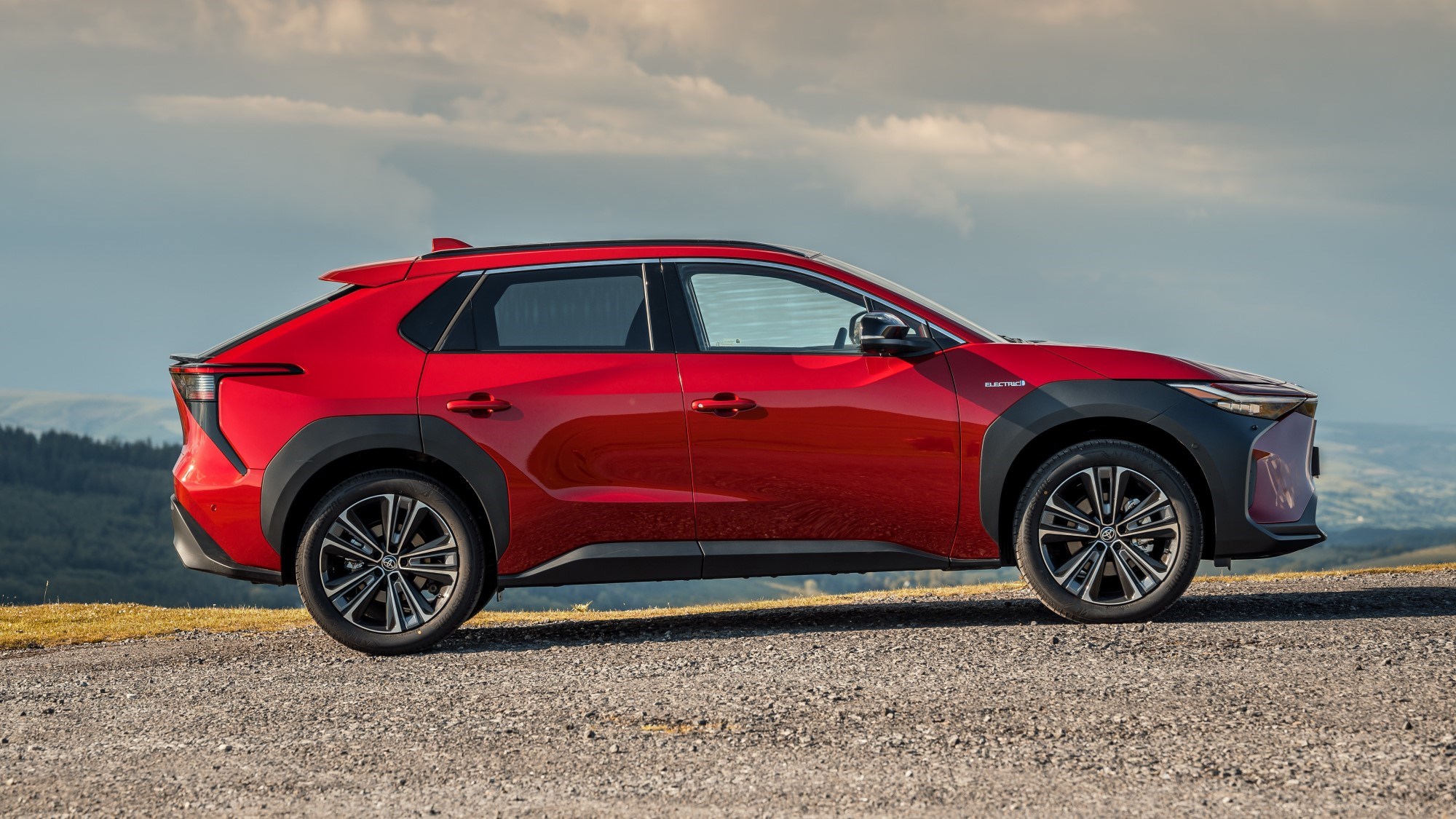
There’s also an AWD model which feels Subaru’s influence and is ‘symmetrical’ – downrating the front motor to 80kW and putting an identical one on the rear axle, for a total output of 215bhp. This pulls the 0-62mph sprint down to 6.9 seconds and unlocks a swathe of X-Mode off-road settings.
There are three available: entry-level Pure, mid-grade Motion and top-tier Vision – with the latter two available as front- or all-wheel drive models. Prices at the time of writing (in July 2024) start at £42,860 for the Pure, £45,210 for Motion and £48,810 for Vision. Pure models have eight-inch infotainment systems, a reversing camera, keyless entry and start, climate control and a heat pump. Motion adds kit like parking sensors, heated front seats and steering wheel, a larger 12.3-inch central display and a wireless charger. Vision includes those radiant heaters as standard, as well as parking assist, powered/heated/cooled front seats and synthetic leather upholstery.
WLTP range for the Toyota bZ4X is a maximum of 318 miles on the WLTP test cycle for the most basic FWD model, knocked down as far as 259 miles if you go for a Vision AWD car.
What’s the interior like?
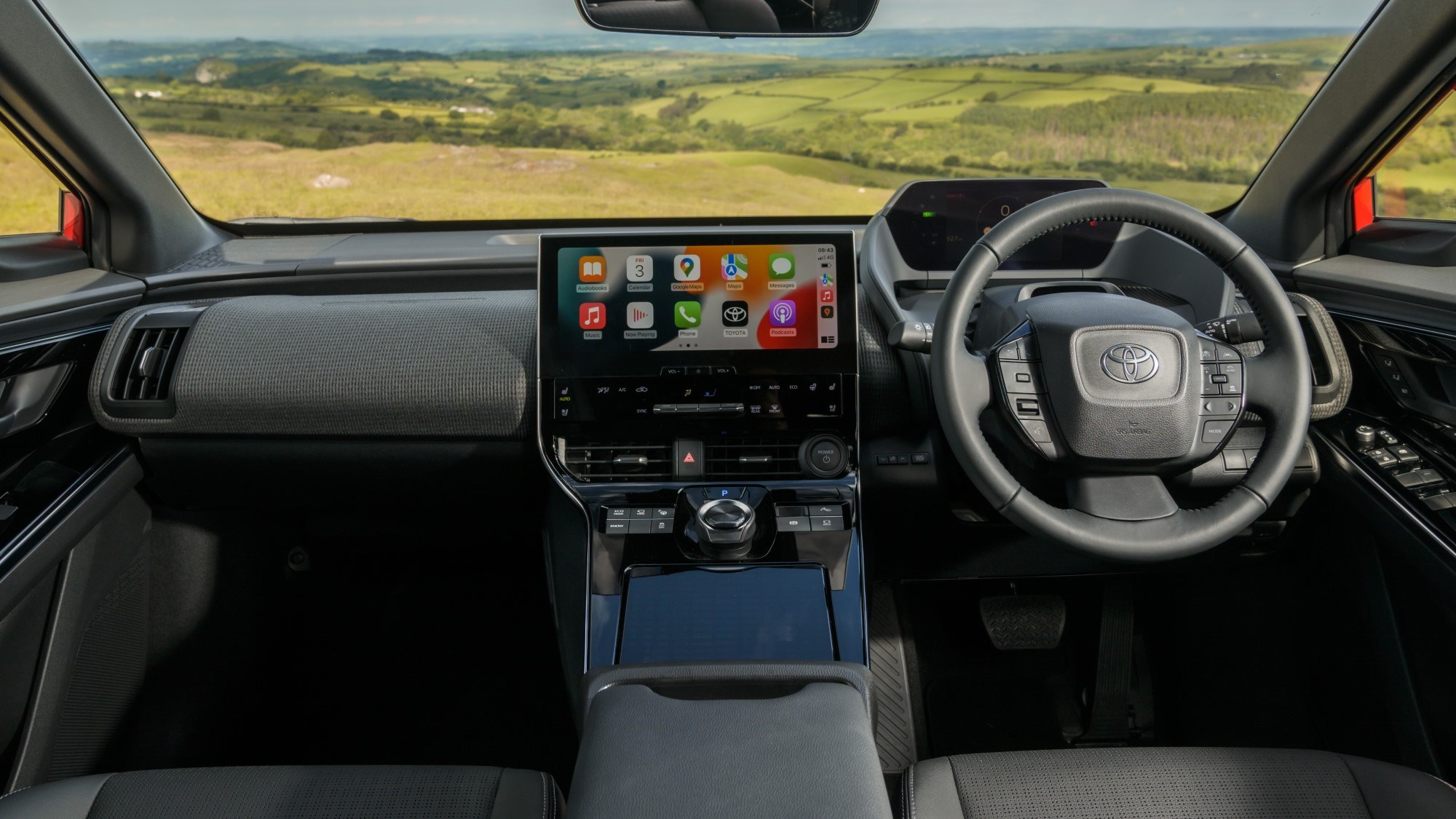
Probably the most interesting part of the whole driving experience, frankly, because it’s a bit wacky. Toyota has scatter-gunned materials at it – with some quite kitsch fabrics used on the dashboard toppers and seat upholstery in certain trims – and the high centre console cocoons you.
The digital instruments look stretched as far towards the windscreen as possible, which is just aesthetically odd more than anything else, and the myriad steering wheel buttons can take a bit of time to get used to. Like most modern Toyotas, the infotainment system is clear and easy to read and responds quickly, but its logic on how menus are laid out can be a little confusing – a lot of the car’s controls are actually handlied via the steering wheel buttons and the instrument display, and not on the central screen. Physical climate controls are very welcome, though.
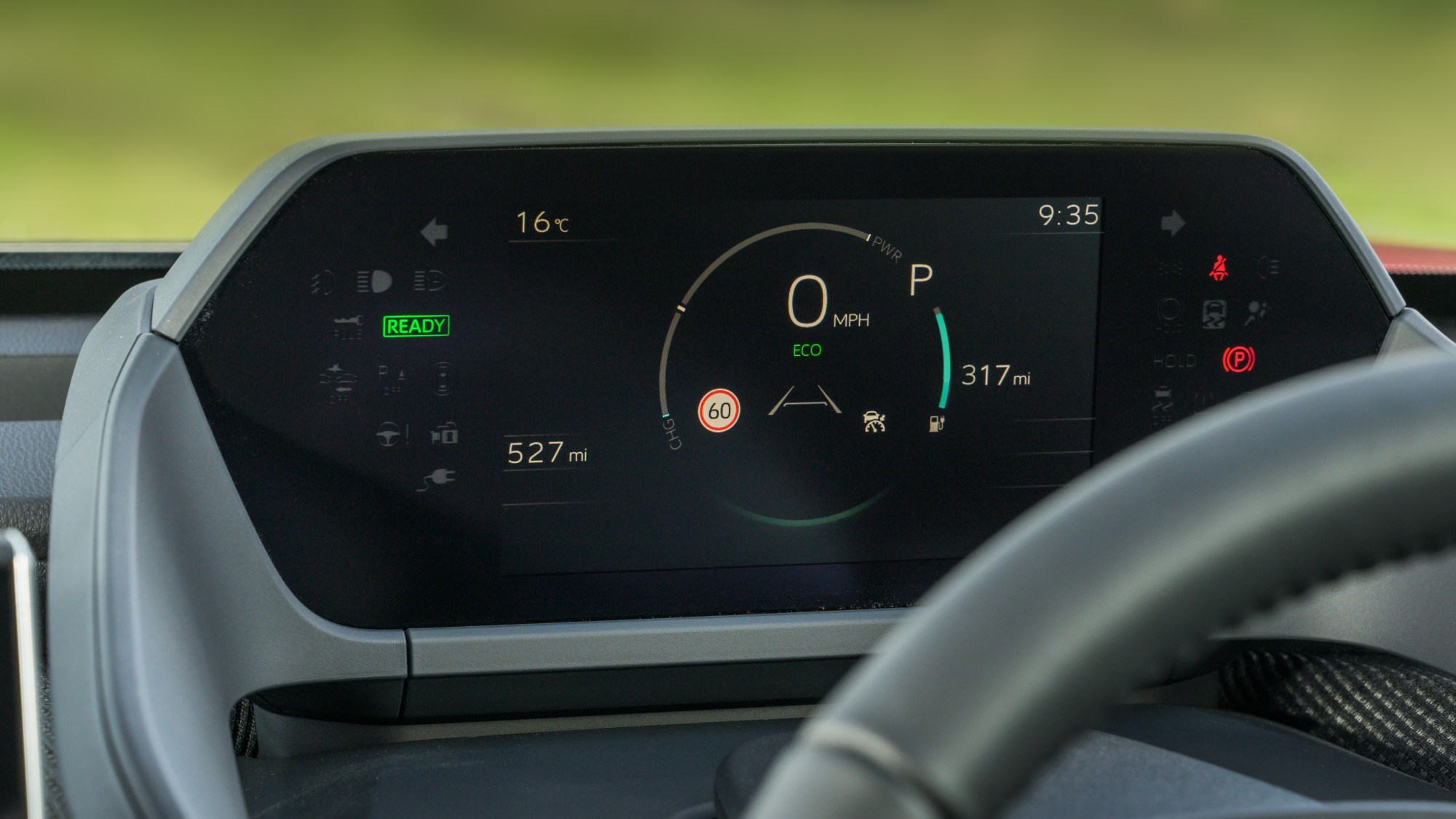
As for space, rear legroom’s exceptionally good and this 6ft 2in tester could comfortably sit behind himself. The usual EV issue is that the high floor means the underside of your thighs could be supported better – that’s a problem that’s mirrored in the front seats, which have very short squabs for taller drivers.
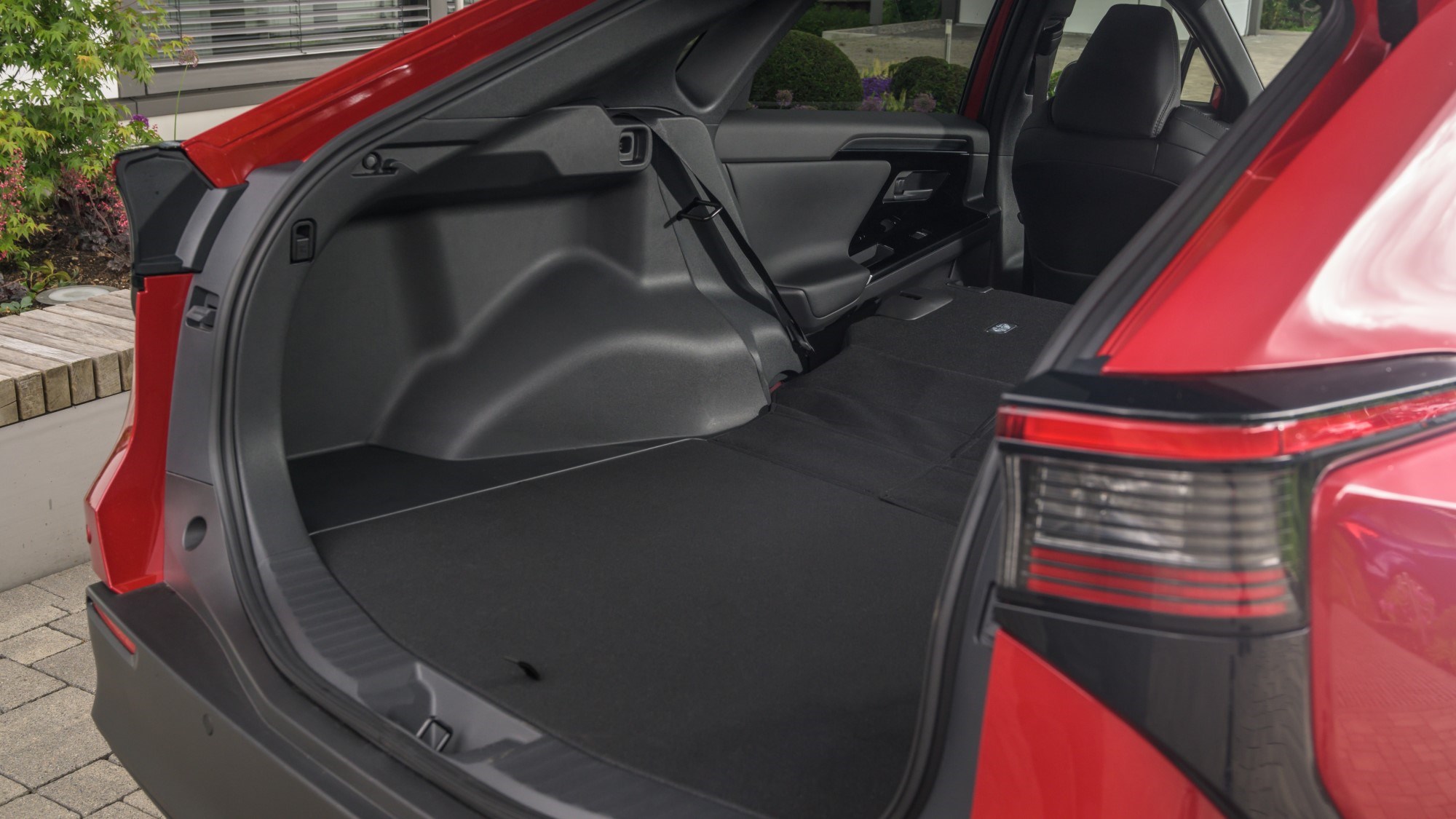
The boot volume, meanwhile, is only average at 452 litres – significantly less than a Skoda Enyaq’s 585 litres or the 490 you get in a Kia EV6. There’s no frunk, either, so charging cables sit in a little compartment under the boot floor.
What’s it like to drive?
Performance is roughly what we’ve come to expect from a mid-range EV these days. There’s a satisfying surge of acceleration, though even if you floor it it’s not too lairy. That initial surge tails off as you speed up, though there’s plenty in reserve for a motorway overtake.
More impressive is the ride and handling. The stiff body structure and compliant suspension helps it feel amazingly composed over rough surfaces – though it doesn’t iron them out completely, it’s totally unfazed. For a two-tonne SUV on 20-inch alloys, it’s very good indeed.
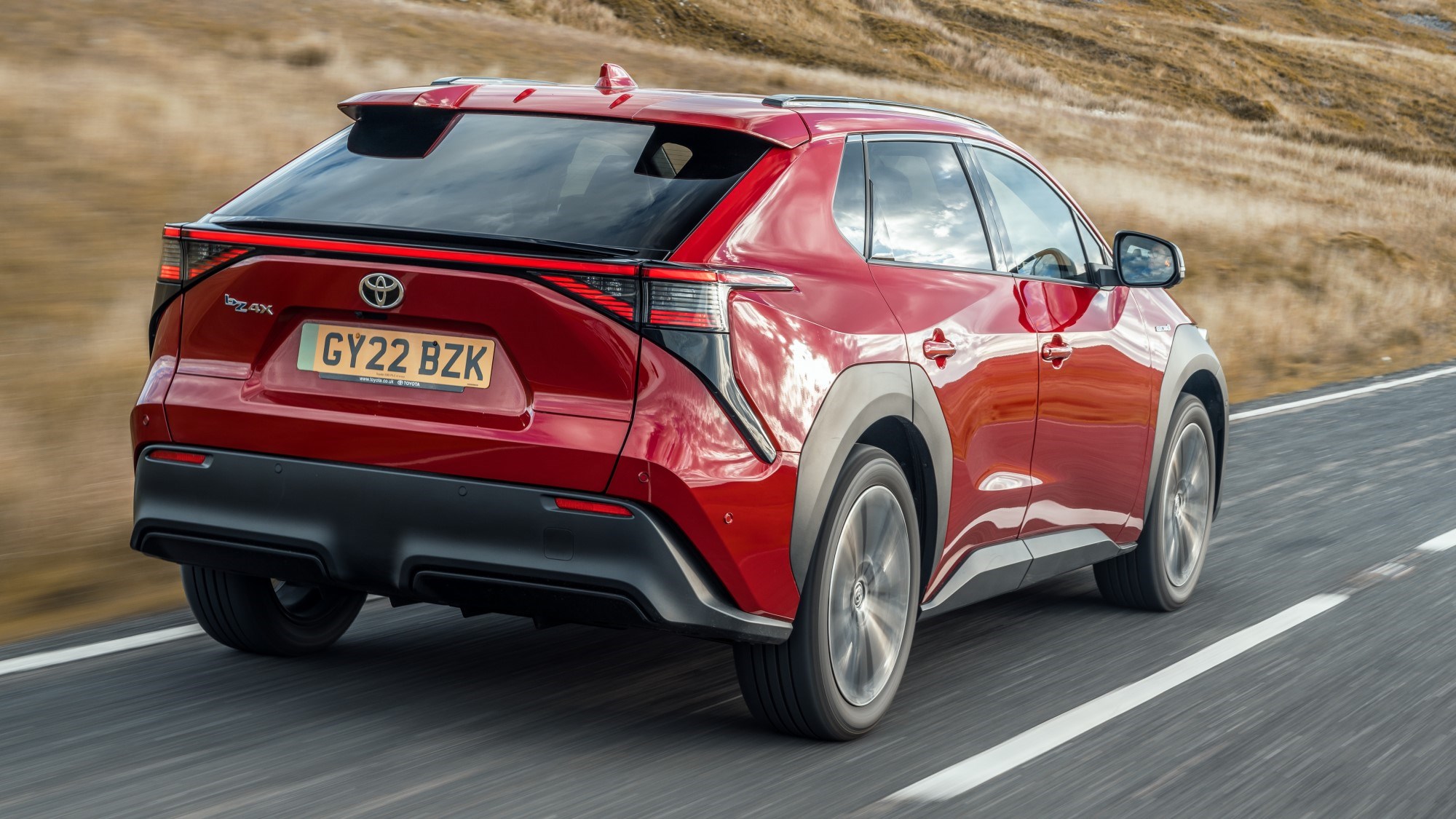
Stick it into a corner and the bZ4X remains composed, stays flat and even has a hint of dynamism. The influence of Toyota’s performance department has been creeping into its road cars for a little while now and it’s on display here, making the bZ4X significantly nicer to drive than an ID.4 or a Model Y. The steering, for example, has a pleasing alertness off the dead centre, and doesn’t take much movement lock-to-lock to engage in some tight turns.
It’ll even do some very mild off-roading. You’ll be limited by ground clearance, but the bZ4X can wade through up to 500mm of water and the X-Mode driving modes give it an impressive amount of traction on slippery surfaces.
At a cruise, the wind noise around those usefully big door mirrors is a little obtrusive but, overall, it’s comfortable and calm to drive.
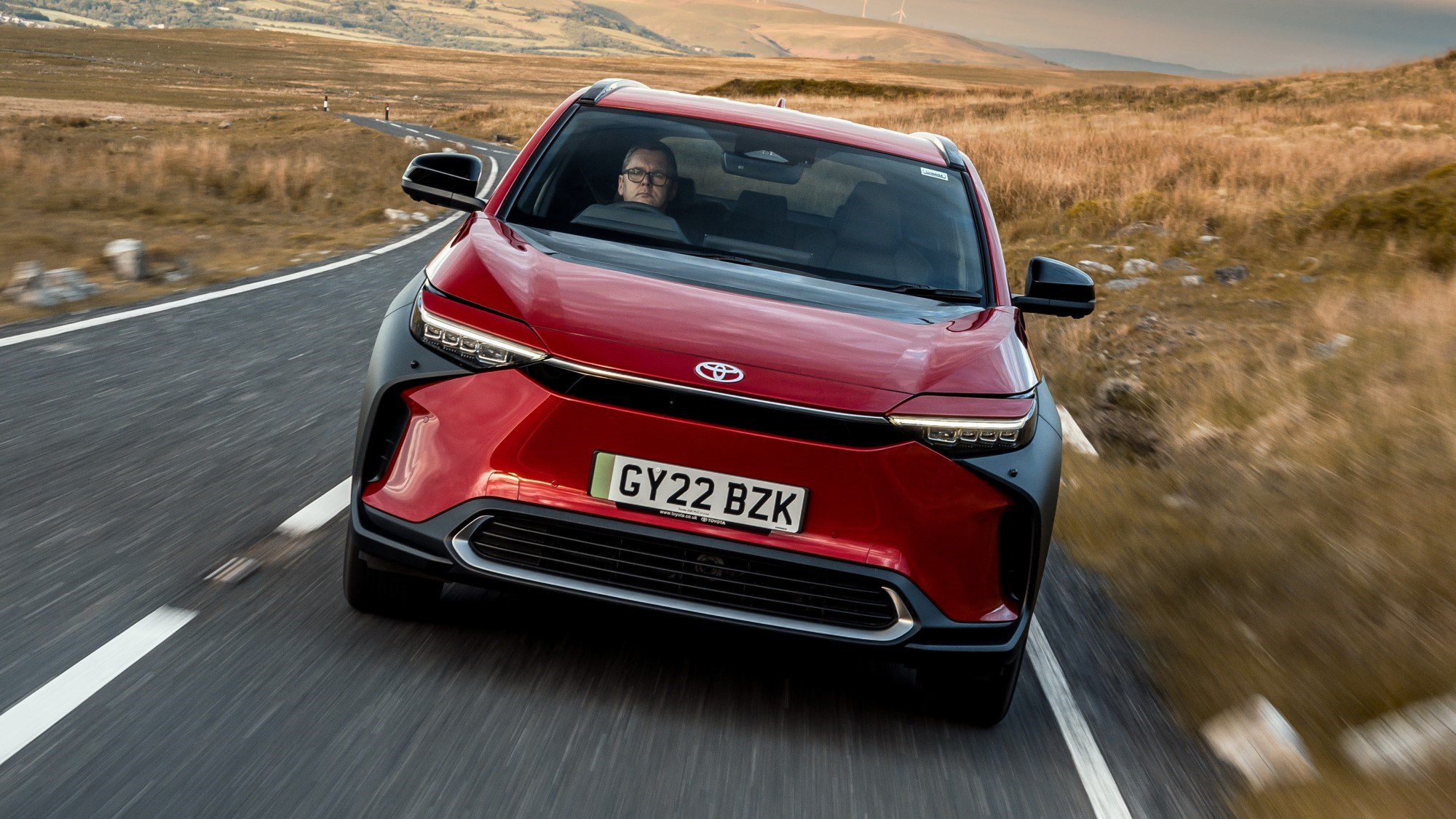
Before you buy
The clanger for the bZ4X is that it’s just very average for this class of car. Pretty much all rivals can at least compete or better the Toyota in some way, meaning this middle-of-the-road EV will be overlooked. A Skoda Enyaq 80 or a Ford Mustang Mach-E can go further on a charge, while cars like Hyundai’s Ioniq 5 and Kia’s EV6 feel like more interesting products that are just as practical for similar money. You also can’t ignore Tesla’s rather good Model Y that manages to better the Toyota in both of these categories even if, after some updates, the ride is still quite hard.
Verdict: Toyota bZ4X
Stupid name aside, the Toyota bZ4X is a reasonable entrant to the bulging E-SUV segment. It’s spacious, comfortable and quiet and should prove utterly painless to own whether you’re leasing it for a short spell or hanging onto it for the best part of a decade.
But the Toyota’s Achilles’ heel is that it’s just so very average. Most cars in this segment can better it in some way, even if the bZ4X feels like a perfectly reasonable package in isolation. The new Toyota bZ4X won’t set your heart racing – it’ll lower your blood pressure. Just save some room in the garage for a GR Yaris for the weekends.
Specs are for a bZ4X Motion FWD